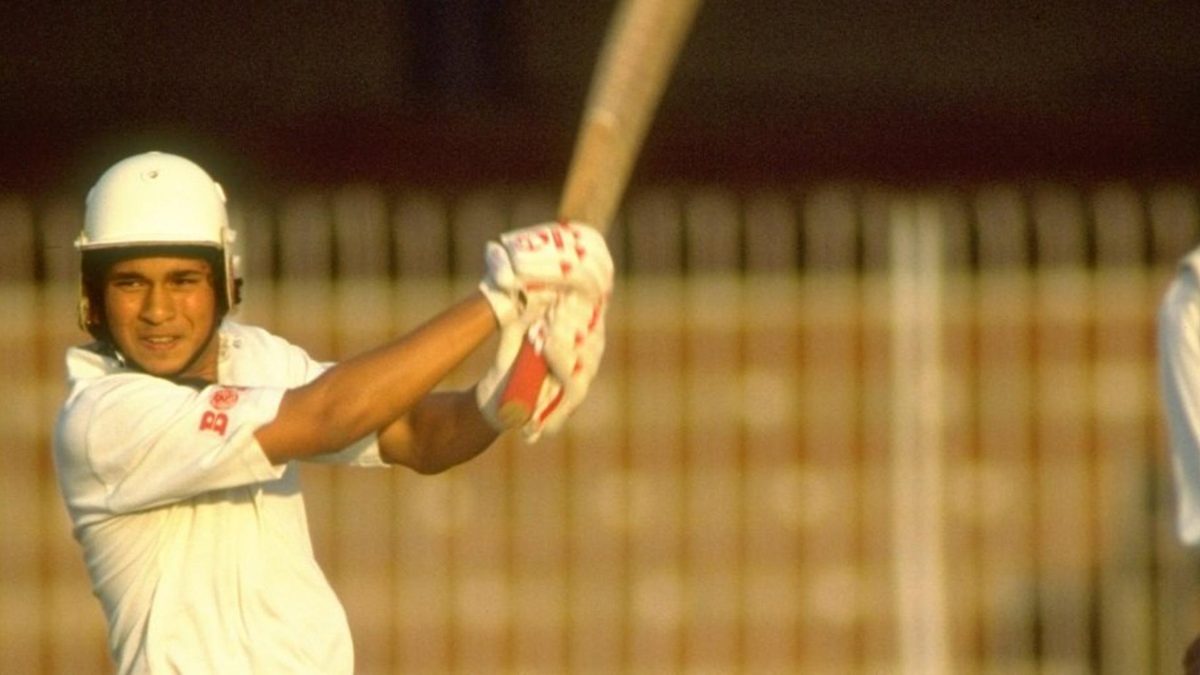
Throughout the 1990s and beyond, Sachin Tendulkar remained India’s greatest sporting superstar. Yet, as Abhishek Mukherjee recalls, Indian fans could not watch his Test debut.
Before embarking upon the whys, it is important for the reader to understand what watching cricket in 1980s India used to be like.
There used to be one channel, Doordarshan. There used to be Doordarshan 2 in a handful of metro cities – but in a country this vast, that served only a tiny section of the population.
This posed problems, for the same channel catered to everyone – and it did not run for 24 hours a day either. News at regular intervals was only part of it, and they did not last long either. But live telecast would also break for University Grants Commission programmes or cut to ministers inaugurating random institutes (it was a government-run channel).
We would make a dash for the radio sets, only to find out that All India Radio had synchronised their news programmes with their Doordarshan counterparts.
But all that was only part of the problem. Transmission used to depend on archaic antennae, which meant that after a storm, one would spot antenna-adjusters on terraces, communicating every iteration as loudly as they could to the viewers.
The telecast, too, was archaic. The cameras were placed at one end, forcing the viewer to watch the cricket from behind the batter in alternate overs. The feed was so grainy that you could hardly spot the ball, and at times the camera did not capture the ball if it sped to the boundary, forcing the viewer to take the commentator’s words for the outcome. Oh, and you would be lucky if they showed the score every over (though, to be fair, the commentators read it out from time to time).
Of course, there was print – both newspapers and magazines. Match reports were detailed, for they had to be: if you had missed the day’s action, your best chance was to catch some action used to be a 45-second capsule (not necessarily the best 45 seconds) during the evening news. The magazine coverage used to be vivid, at least for cricket.
There was ample build-up ahead of India’s 1989/90 tour of Pakistan. India-Pakistan was always huge, but this had been compounded by Pakistan’s success in India since Javed Miandad’s last-ball six in Sharjah in 1986. In the 1986/87 season, Pakistan won the ODIs 5-1 and the Tests 1-0 on Indian soil. In 1989, months before this tour, they had won the six-nation Nehru Cup in India.
There had been considerable build-up around Sachin Tendulkar as well. Only 16, he was already being portrayed as the next big thing in Indian cricket. Earlier in that decade, the fans had witnessed the teenage L Sivaramakrishnan and Maninder Singh arrive and fade away, so they were circumspect. Yet, they had hope…
Just ahead of the tour, one of the magazines published a photograph of the three uncapped Indians on that tour – fast bowlers Salil Ankola and Vivek Razdan, and Tendulkar. They sat on a red couch. Tendulkar seemed innocuous, unimpressive. Indian fans – at least the parents among them – were concerned about how he would face an army of fast bowlers in their den. Waqar Younis was uncapped as well, but they still had Imran Khan and Wasim Akram. Who thrusts a 16-year-old amidst all that?
But as the Indian squad arrived in Pakistan, Indian politics was undergoing a major change as well. The Indian National Congress had been ousted from the centre following a collective effort from several regional parties. VP Singh, leader of Janata Dal, had become India’s seventh Prime Minister.
Between December 2, 1989 and March 19, 1998, India would have six Prime Ministers including a five-year stint from PV Narasimha Rao. This was a unique phase in her history as a Republic.
The Lok Sabha Elections for the year were contested on November 22 and 26. The first Test match began on November 15, the second on November 23. There was ample coverage on that one channel – enough to push the focus away from the cricket.
Whether it was due to the pre-election bulletins or something else, neither Test was telecast in India. Thirty-three years down the line, not showing the first match (or at least parts of it) live seems bizarre, particularly when Hindi movies used to be run as fillers between bulletins.
This was not a first. When Viv Richards’ West Indies had toured India in 1987-88, Doordarshan had officially decided to not telecast the Test matches. If one goes by rumours, that decision was reversed only on the evening before the first Test match.
There was no radio coverage either. For two Test matches of an India-Pakistan series, all of India had to wait for next morning’s newspaper.
Thus, the nation missed Tendulkar’s debut, and one of Indian cricket’s greatest butterfly moments. Raman Lamba, set to play in the first Test, opted out with an injury. Mohammad Azharuddin replaced him. He would be appointed captain for the next series, and his leadership would define Indian cricket in the 1990s in many ways.
But that is another story.







